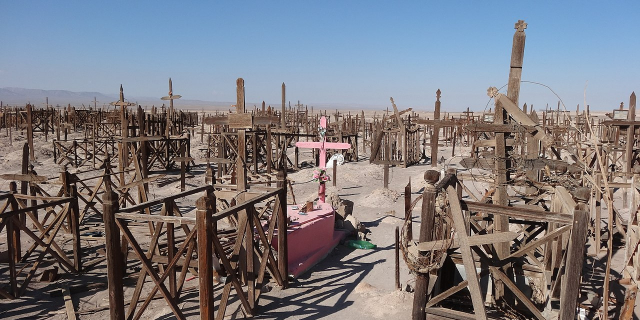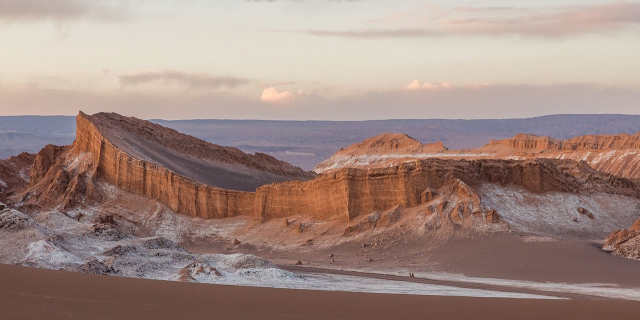The Atacama Desert (Spanish: Desierto de Atacama) is a desert plateau located on the Pacific coast of South America, in the north of Chile. Stretching over a 1,600 km (990 mi) strip of land west of the Andes Mountains, it covers an area of 105,000 km2 (41,000 sq mi), which increases to 128,000 km2 (49,000 sq mi) if the barren lower slopes of the Andes are included.
The Atacama Desert is the driest nonpolar desert in the world, and the second driest overall, behind some specific spots within the McMurdo Dry Valleys. It is the only hot true desert to receive less precipitation than polar deserts, and the largest fog desert in the world. The area has been used as an experimentation site for Mars expedition simulations due to its similarities to the Martian environment.
The constant temperature inversion caused by the cool north-flowing Humboldt Ocean current and the strong Pacific anticyclone contr...Read more
The Atacama Desert (Spanish: Desierto de Atacama) is a desert plateau located on the Pacific coast of South America, in the north of Chile. Stretching over a 1,600 km (990 mi) strip of land west of the Andes Mountains, it covers an area of 105,000 km2 (41,000 sq mi), which increases to 128,000 km2 (49,000 sq mi) if the barren lower slopes of the Andes are included.
The Atacama Desert is the driest nonpolar desert in the world, and the second driest overall, behind some specific spots within the McMurdo Dry Valleys. It is the only hot true desert to receive less precipitation than polar deserts, and the largest fog desert in the world. The area has been used as an experimentation site for Mars expedition simulations due to its similarities to the Martian environment.
The constant temperature inversion caused by the cool north-flowing Humboldt Ocean current and the strong Pacific anticyclone contribute to the extreme aridity of the desert. The most arid region of the Atacama Desert is situated between two mountain chains, the Andes and the Chilean Coast Range, which are high enough to prevent moisture advection from either the Pacific or the Atlantic Ocean, creating a two-sided rain shadow effect.































Add new comment